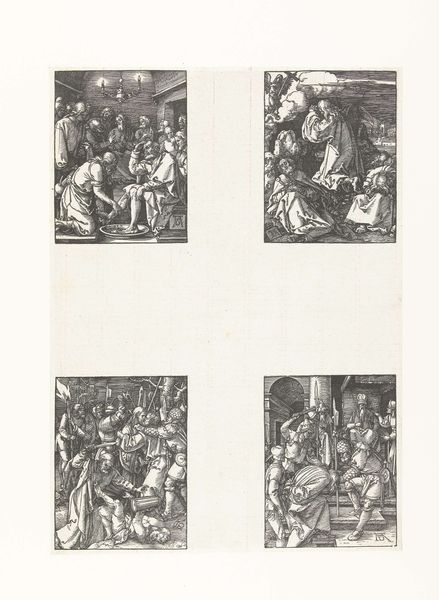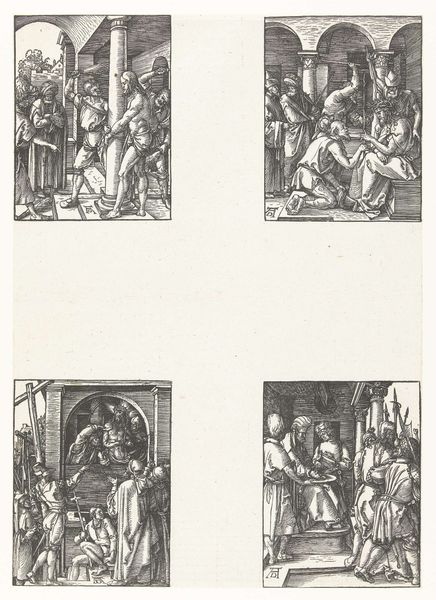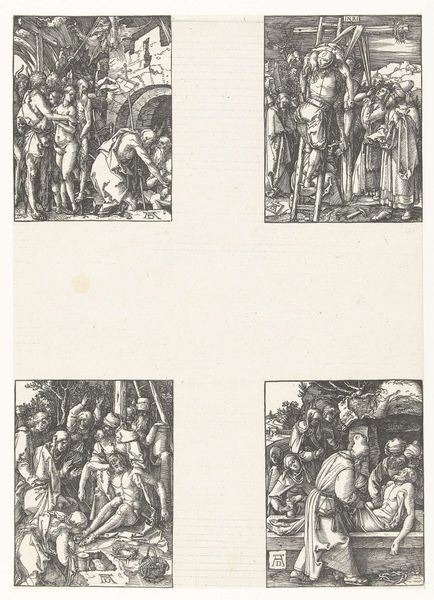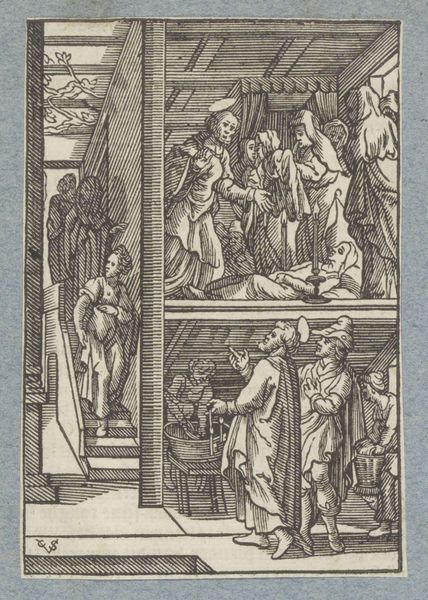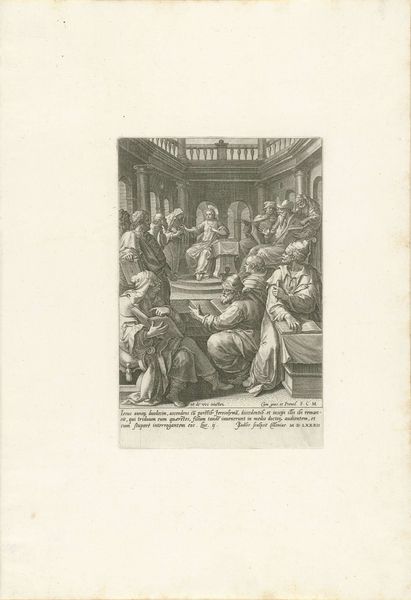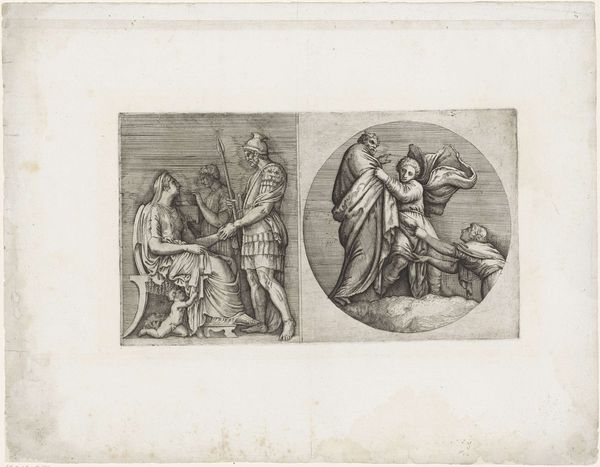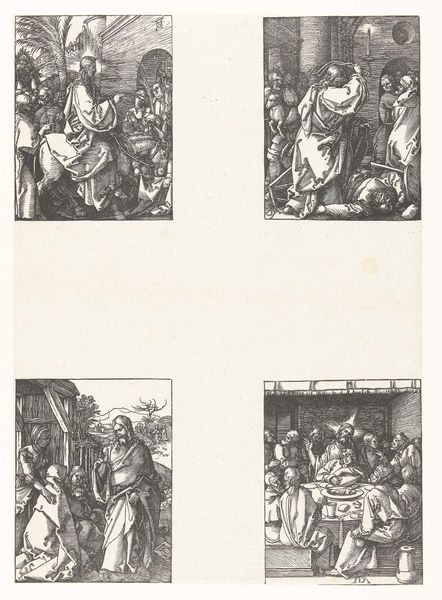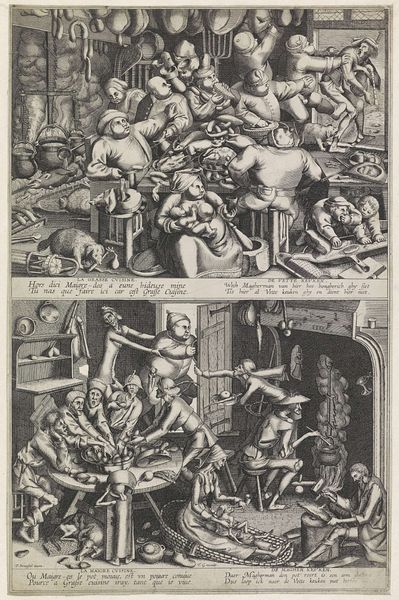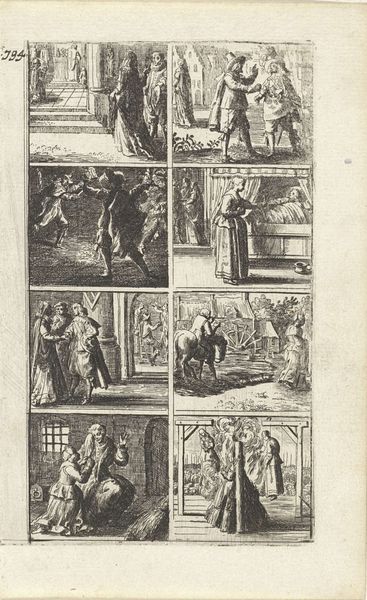
Opstanding, Christus verschijnt aan zijn moeder, Christus verschijnt aan Maria Magdalena, Christus in Emmaüs 1510
0:00
0:00
print, ink, engraving
#
ink drawing
#
narrative-art
# print
#
pen sketch
#
pencil sketch
#
ink
#
christianity
#
history-painting
#
northern-renaissance
#
engraving
#
christ
Dimensions: height 127 mm, width 97 mm, height 352 mm, width 252 mm
Copyright: Rijks Museum: Open Domain
Editor: This is "Opstanding, Christus verschijnt aan zijn moeder, Christus verschijnt aan Maria Magdalena, Christus in Emmaüs" created in 1510 by Albrecht Durer, and currently housed in the Rijksmuseum. It’s a print featuring a series of scenes. What strikes me is the stark contrast and how the story unfolds in these four distinct vignettes, like a comic. How do you interpret this work, especially considering the time it was made? Curator: This print is more than just a biblical narrative; it's a commentary on power, faith, and societal roles in the Northern Renaissance. Durer's choice to depict these specific resurrection scenes—Christ appearing to his mother, Mary Magdalene, and in Emmaüs—highlights different aspects of faith and gender dynamics. How does the relatively small scale of the print affect its reception, do you think? Editor: Well, maybe the size encourages closer inspection. But how might these depictions challenge or reinforce the period's views on women, given their prominent roles in these scenes? Curator: Precisely! Consider the social expectations of women at the time. Their emotional experiences were often dismissed, yet Durer centres their encounters with the resurrected Christ. Mary Magdalene, especially, challenges traditional roles as she becomes a key witness. Also, think about the Reformation brewing during this time. What do you make of the possible subversive elements within Durer's detailed realism? Editor: I see what you mean. It's like Durer is quietly empowering these women, giving their experiences validity through art. The realism perhaps lends authority to these narratives in a way that’s surprisingly bold. It gives them agency and emphasizes their importance in the gospel. Curator: Exactly. Through this close attention to both the divine and the human, Durer provokes questions about power structures. The print becomes a visual discourse. Editor: So, beyond the religious context, we're also looking at social and political statements embedded in the art. That’s powerful, I didn't think of it that way at first! Curator: Precisely. The image becomes more than just scenes from a religious book; it reflects on issues surrounding society.
Comments
No comments
Be the first to comment and join the conversation on the ultimate creative platform.
